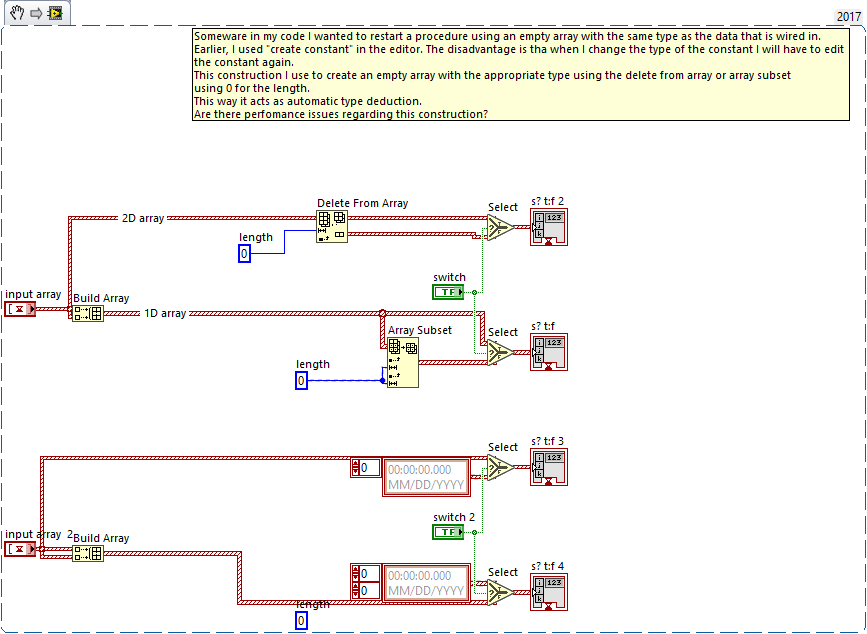
ArjanWiskerke
-
Posts
8 -
Joined
-
Last visited
Content Type
Profiles
Forums
Downloads
Gallery
Everything posted by ArjanWiskerke
-
Somewhere in my code I wanted to restart a procedure using an empty array with the same type as the data that is wired in.
Earlier, I used "create constant" in the editor. The disadvantage is that when I change the type of the constant I will have to edit
the constant again.
This construction I use to create an empty array with the appropriate type using the delete from array or array subset t
using 0 for the length.
This way it acts as automatic type deduction.
Are there performance issues regarding this construction?I think there might even be a standard "empty array.vi" that I overlooked.

